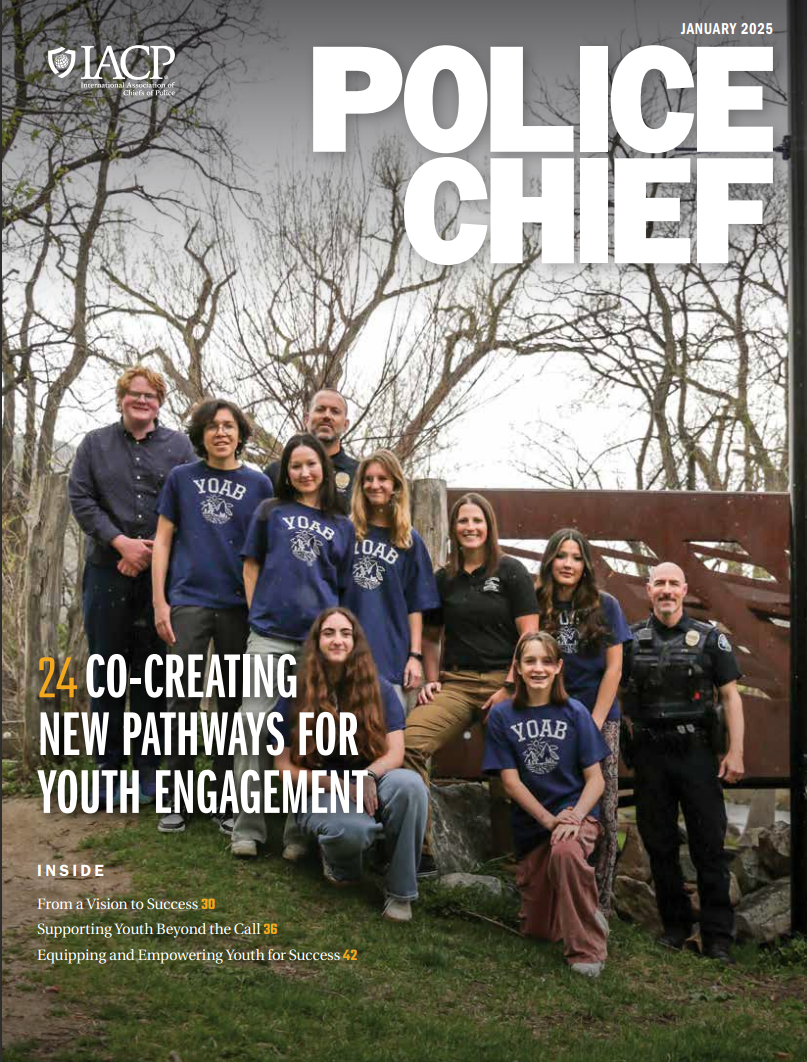Many communities worldwide are confronted by unacceptable levels of crime and violence on their streets. Typically, a disproportionate amount of this violence is the result of young males killing other young males. In the United States, homicide is the second leading cause of death for all males 15–24 years old. For African American males, homicide is the leading cause of death among those 10–24 years old. This means we are seeing a generation of young men die every day. This is simply unacceptable, which is why I have chosen to focus on reducing street violence and crime as one of my initiatives during my time as president of the IACP.
In order to reduce violent crime in our communities, it is imperative that we work with our partners in the criminal justice system to reduce the level of violence through an array of proven approaches. These range from early intervention to aggressive enforcement and prosecution to enhanced penalties for those that commit crimes with a firearm. Our efforts need to be community-wide in order to reduce violence and to not cease after a police surge on a targeted area is complete. In order to successfully reduce violence in our communities, we need our efforts to be long term and have community-wide support from community advocates and faith-based advocates, along with the implementation of support programs.
To help guide this effort, the IACP has assembled an advisory committee consisting of police chiefs, academics, researchers, advocacy groups, and youth organizations that will be tasked with assessing the causes behind the current level of street violence. The committee will examine all aspects of street violence, including prior and current research, trends, community impact, victimization levels, police strategies to address the problem, and justice system responses. The focus will be on the disproportionate number of youth killed, particularly black-on-black youth killings.
It will be the goal of this advisory panel to develop a set of recommendations that will assist agencies in addressing and reducing the level of violence in their communities and to help law enforcement respond effectively when violence occurs. In particular, the committee will be tasked with developing recommendations that focus on a wide variety of tactics, including prevention, intervention, aggressive enforcement, prosecution, enhanced penalties, and innovative intervention approaches for both at-risk youth and misdemeanor offenders to reduce street violence.
The first of the advisory committee meetings, which included police chiefs and researchers, occurred in late February 2014. I am pleased to say that I think we are off to a great start and I look forward to additional meetings where academics, advocacy groups, and youth organizations will participate.
The committee’s final report and set of recommendations will be presented at a plenary session at IACP 2014 in Orlando, Florida.
It is my hope that our efforts will help reduce and prevent the senseless acts of violence and deaths that plague our communities. It will be up to each and every law enforcement agency and professional to implement the committee’s recommendations to make a difference. I know I can count on my law enforcement colleagues to take the recommendations to the next step and implement the important changes that need to occur to help save lives and make our communities’ residents feel safe.
Huge Thanks and Farewell to Bart R. Johnson
As some of you may be aware, our current executive director, Bart R. Johnson, will be leaving the IACP at the end of March to return to New York. Bart has been a huge asset to the association, and the amount of work he has accomplished during his time with the IACP has been remarkable.
Internally, Bart re-organized the staff of the IACP to be more efficient in the way it operates; he oversaw the plan to move IACP headquarters to a new building; he upgraded the technology used by the IACP; and, overall, he has made the IACP more cost effective and nimble. Externally, Bart has enhanced and built new relationships for the IACP with federal, municipal, and private sector partners, which has clearly benefited the IACP. Bart has made a considerable amount of progress for the IACP and through his efforts he is leaving the IACP in a great place. I think I can speak for everyone when I say that we have been very fortunate to have Bart at the helm for the past two years.
I know each and every one of you will join me in thanking Bart for all that he has done and wishing him all the best in his new endeavor in New York, which undoubtedly will allow him to spend more time with his wife Maryann and their family. ♦
Please cite as:
Yousry “Yost” Zakhary, “Reducing Violence and Crime on Our Streets,” President’s Message, The Police Chief 81 (March 2014): 6.


